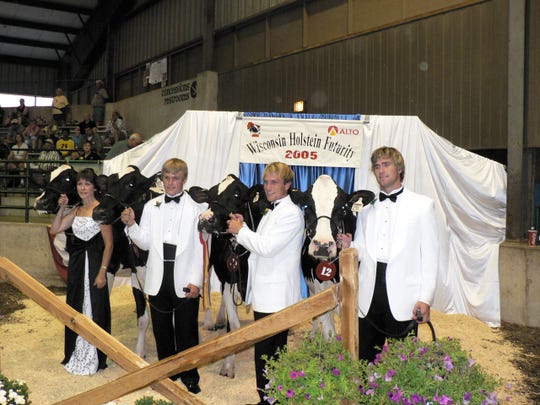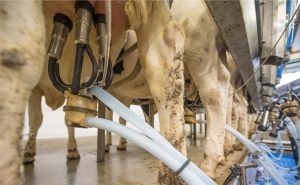At Green Bay, price movements were small and far between as the participants were limited to cheese sellers and buyers. The Block cheese price stood at at $1.6950 per pound when the switch to the CME was made in May 1997. Since then the Block cheese price has been up, down and sideways.
A new low
The $1.00 per pound modern low price achieved on last April 15th was a sure sign of long-term doom and gloom for farmers milk prices. Milk dumping and lowered production followed as dairy herds were cut back at the direction of processors who were overwhelmed by the milk supply.
Then the highs
The Class III milk price was $20.45 in November 2019 and farmers were paying off some debt. By last May, the Class III price was down $8.18 to $12.14 per cwt. But to everyone’s surprise (except maybe farmers who had to reduce their milk flow almost instantly) the June Class III price jumped up $8.00 per cwt. to an awesome $21.04.
Since the rise in Block cheese price began in April it has set new record prices almost weekly with the new high of $3.00 per pound last Monday.
What next? I’ll never forget the words of John Fridirici, (now retired), procurement manager at Grande Cheese who once told me: “Don’t try to understand or try to explain the cheese trading at the CME, just accept it as it is.”
But, we do know that the USDA has cut their 2020 milk production forecast by one billion pounds and upped their price forecasts. Caution: Will farmers raise their milk production with the better price? Bet on it!
15 years ago
With the less than normal life we all now live with no farm-type meetings of any kind to write about, I looked back 15 years to see what I had written about in my every other week Agri-Dairy Business Letter (discontinued a year ago after 34 years of publication).
July 23, 2005
Milk production in the 23 major States during June totaled 13.7 billion pounds, up 5.4 percent from June 2004 according to the NASS in its July 18 announcement. At the CME both Barrel and Block cheese declined 10 3/4¢ per pound to $1.4025 and $1.4525 respectively. #1 California and Wisconsin were both up 5% in m milk flow from a year ago. New york was a plus 4.3%, Pennsylvania gained 7.8% and #5 Idaho was up a whopping 11.7%.
The 52nd edition of Wisconsin Farm Technology Days ended its three day run in Clark county recently. And a good many visitors from southern Wisconsin learned that indeed, in contrast to the often expressed perception that there is no civilization north of Wisconsin Dells, Clark county and the Malm’s Rolling Acres farm at Loyal on which the event was held, is almost exactly in the center of Wisconsin. This is dairy country as many of us knew it – a land of red barns, tall silos and white farm houses with far fewer “country estates” dominating the landscape as is true in much of southern Wisconsin. It’s “America’s Dairyland with a wide variety of dairy farms ranging from 10 cows on some of the Amish dairies to several progressive family operations of 1,500-2,000 cows.
I was impressed during my two days at the show. But, I’m prejudiced toward the area as my first real job was as Clark County Ag agent. Everything seemed to go on schedule, the hundreds of volunteers worked long and hard and the weather was perfect and crowds were big. Here are some things I’ll remember:
~The calm demeanor of the Malm family – Bob and Sally, son Mitch and his wife Michelle and their children. The Malms seemed to have taken the event in stride. Mitch and Michelle and their children actually moved out of their farm home into an unfinished apartment in a new shed to let visitors trek through the house. It’s hard for me to imagine Michelle allowing committee members Pat Lindner, Greenwood and Marene Crabtree, Thorp to repaint, redecorate and refurbish the house and allow several thousand visitors to peek and poke. (Update: Mitch and Michelle still dairy, milking 120 cows with two Lely robots).
~The many Mennonite farmers in attendance. Over the past couple of decades, there has been a large influx of Amish and Mennonite farmers into the area. The Mennonites came from the high-priced farmland area of Lancaster, Pennsylvania’ to the much lower price farms in Clark county. They call themselves “horse and buggy” Mennonites; they use the horse and buggy for local transportation but they do use modern farm equipment including big tractors (but with steel wheels).
~Meeting Bob Havemeister of Palmer, Alaska who milks 125 cows in the Matanueska Valley near Anchorage, Alaska. About 75 farmers (including Bob’s dad) emigrated to the area in the early 1930’s. Bob is the only dairy farmer from that group that is still in business. Bob’s wife, Jean was raised in the Loyal area and he keeps in contact with Wisconsin dairying through farm publications.
One of his challenges is that he must order most all his supplies and equipment.
“UPS is my best friend,” he says.
Havemeister is also faced with the expansion of Anchorage moving closer and land prices escalating. “The future of farming is uncertain.” he says.
(Update: Havemeister, at age 81 and his son Ty are still milking and running their creamery built in 2012 supplying dairy products to area stores.)
Wisconsin Jersey Junior breeder
Brett Barlass, of Barlass Jerseys, a 300-cow family dairy located near Janesville, WI is one of ten young Jersey breeders recognized by the American Jersey Cattle Association’s national youth achievement contest. Brett is a student in the dairy management program at Cornell University.
(Update: Brett graduated from Cornell and has long managed a 2,200 cow registered milking Jersey dairy in Hilmar, Calif.)
Much has changed since I wrote that newsletter in 2005 but much is the same including milk price discussions. What will the next fifteen years bring?
John F. Oncken is owner of Oncken Communications, He can be reached at 608-572-0747 or e-mail him at jfodairy2@gmail.com













